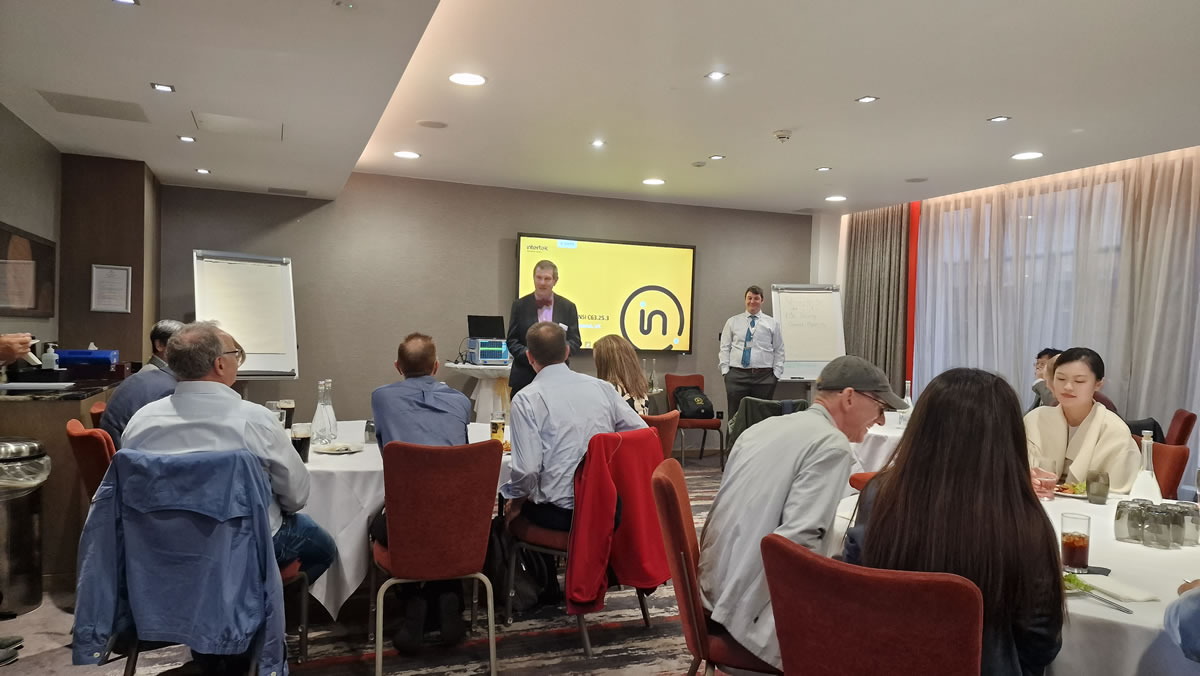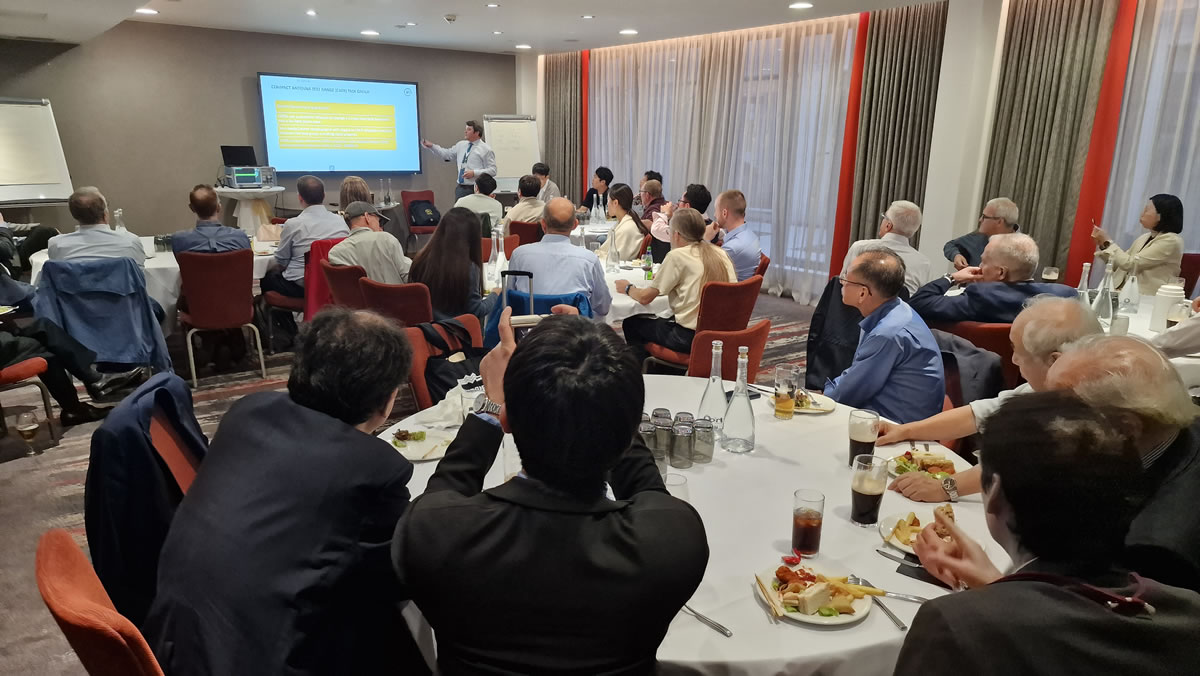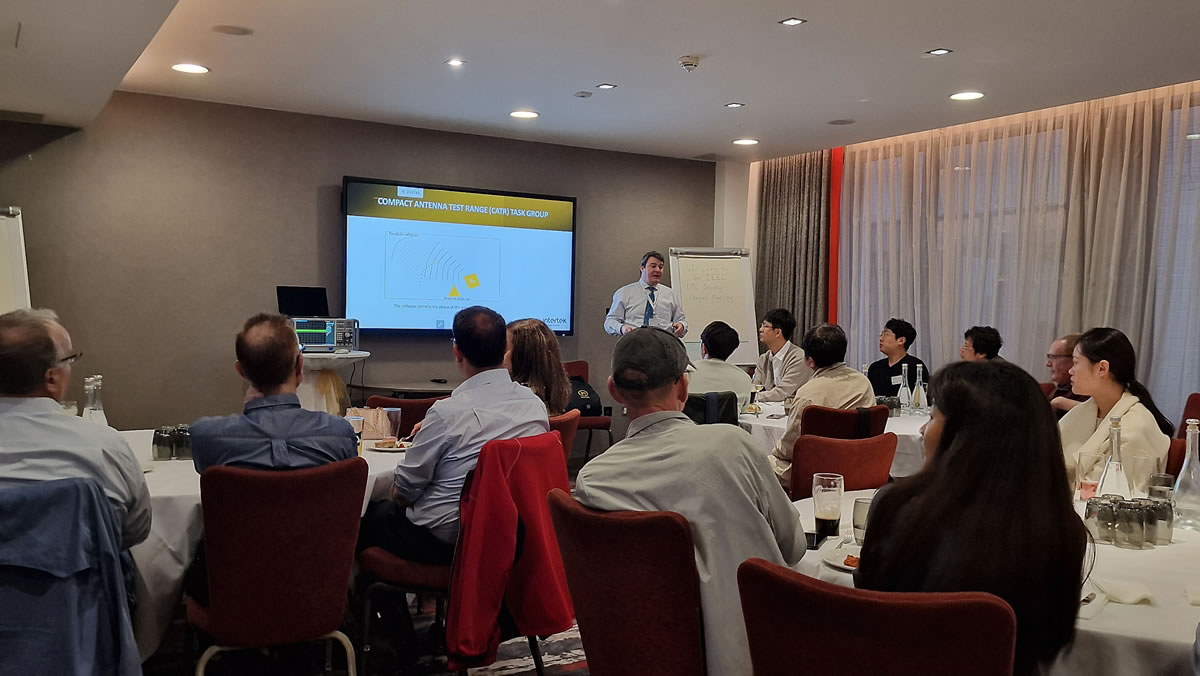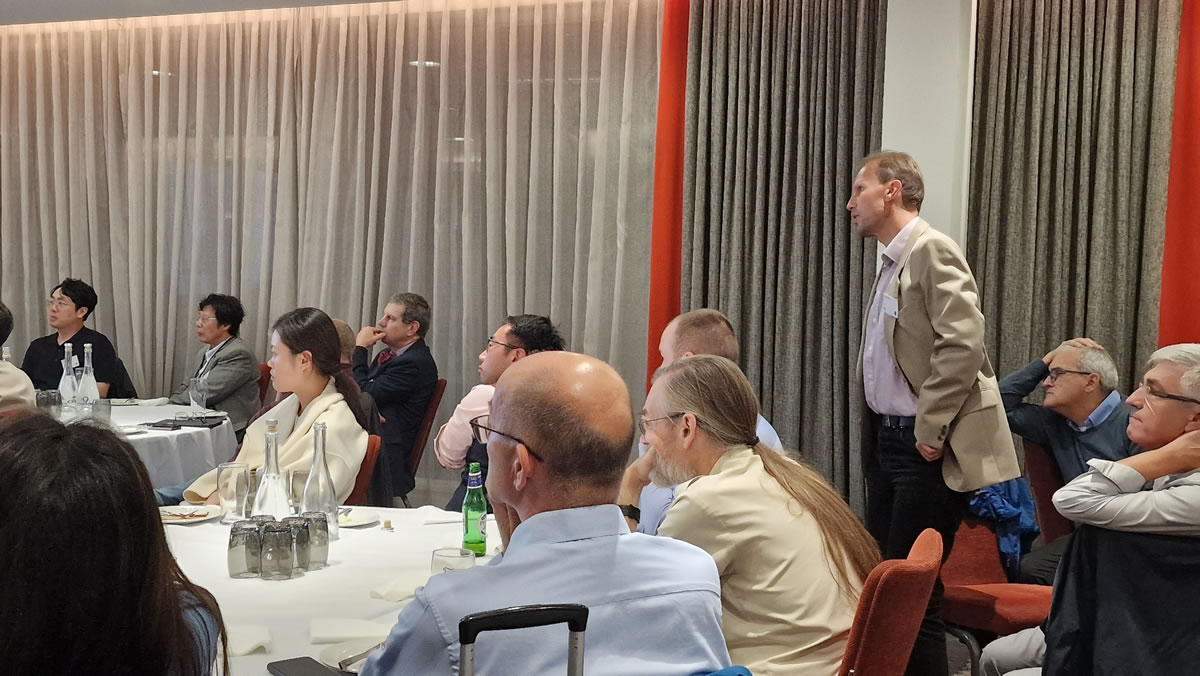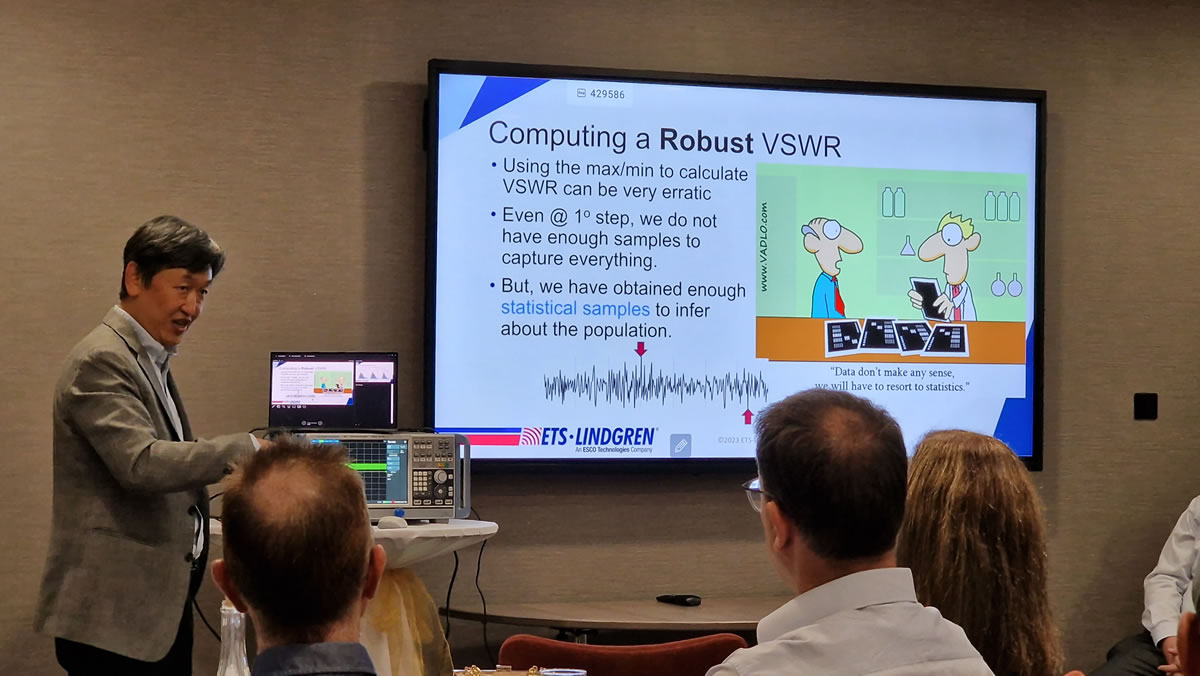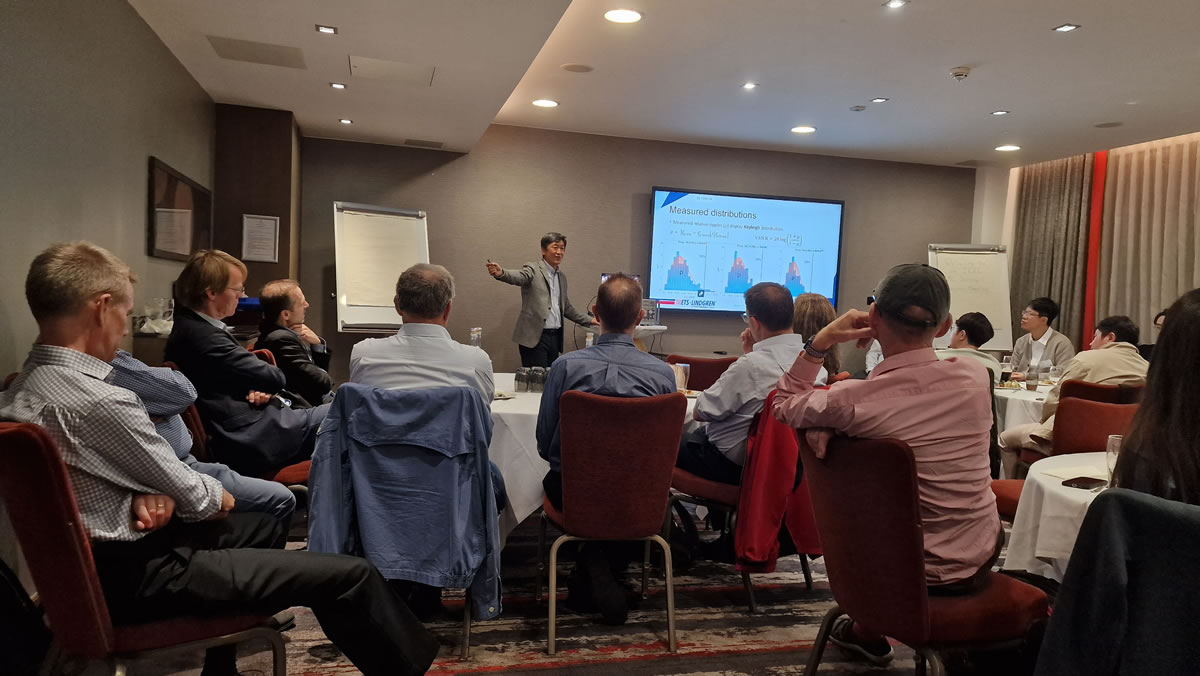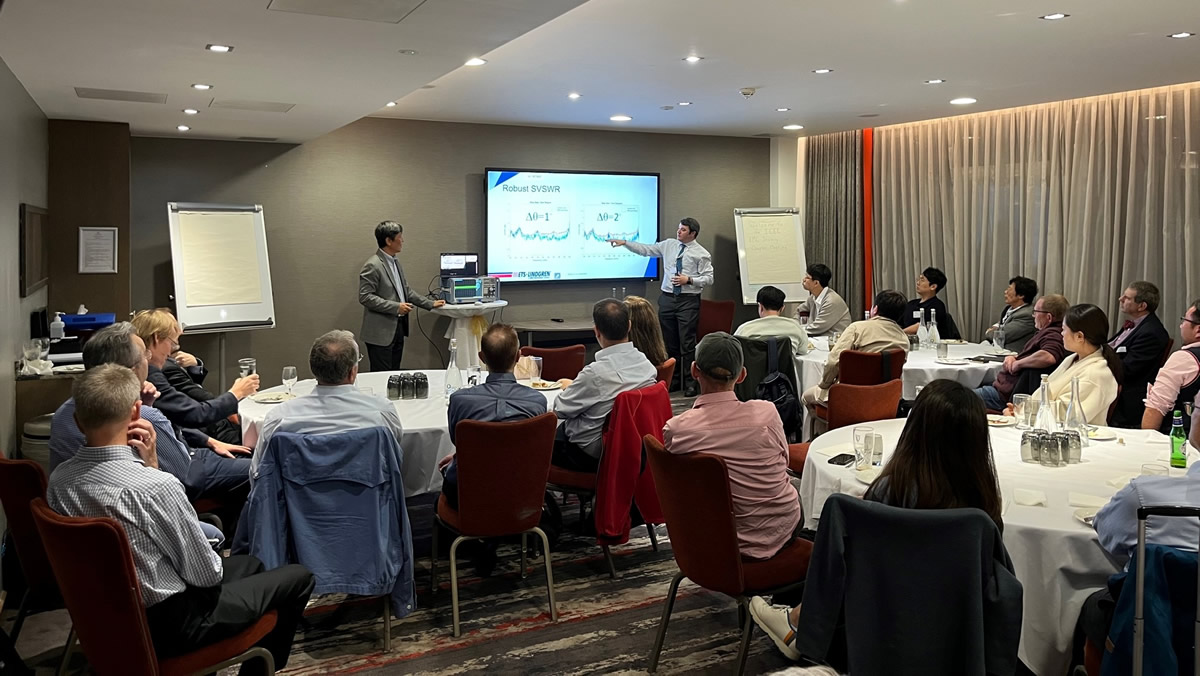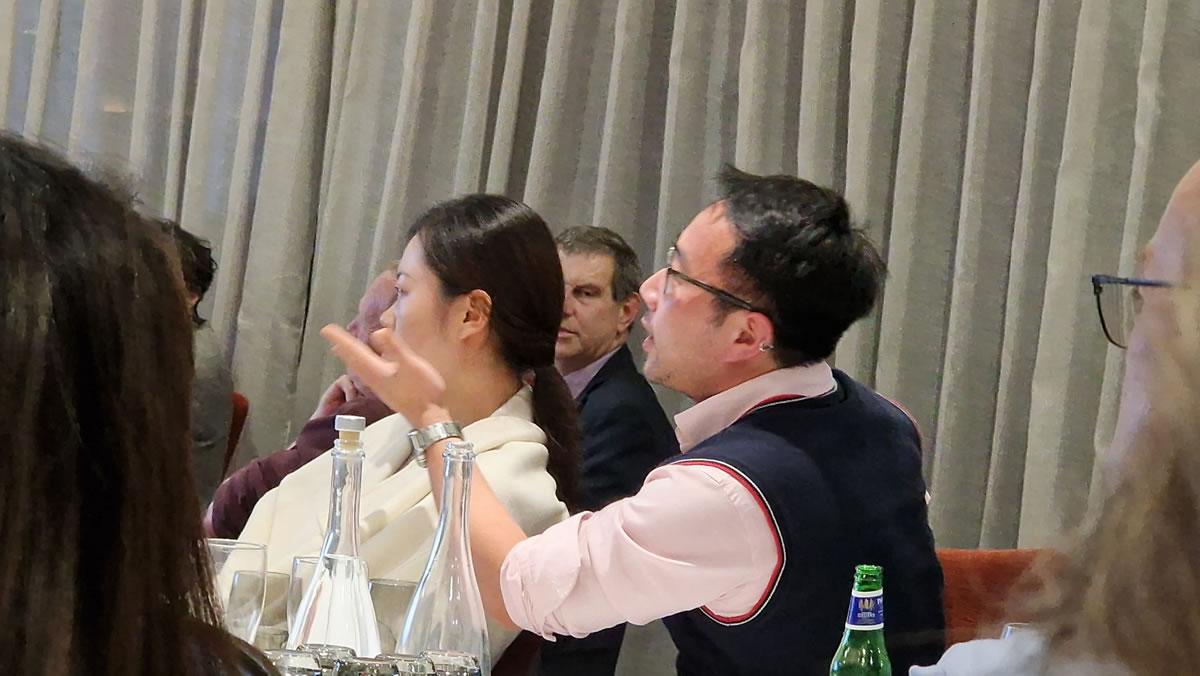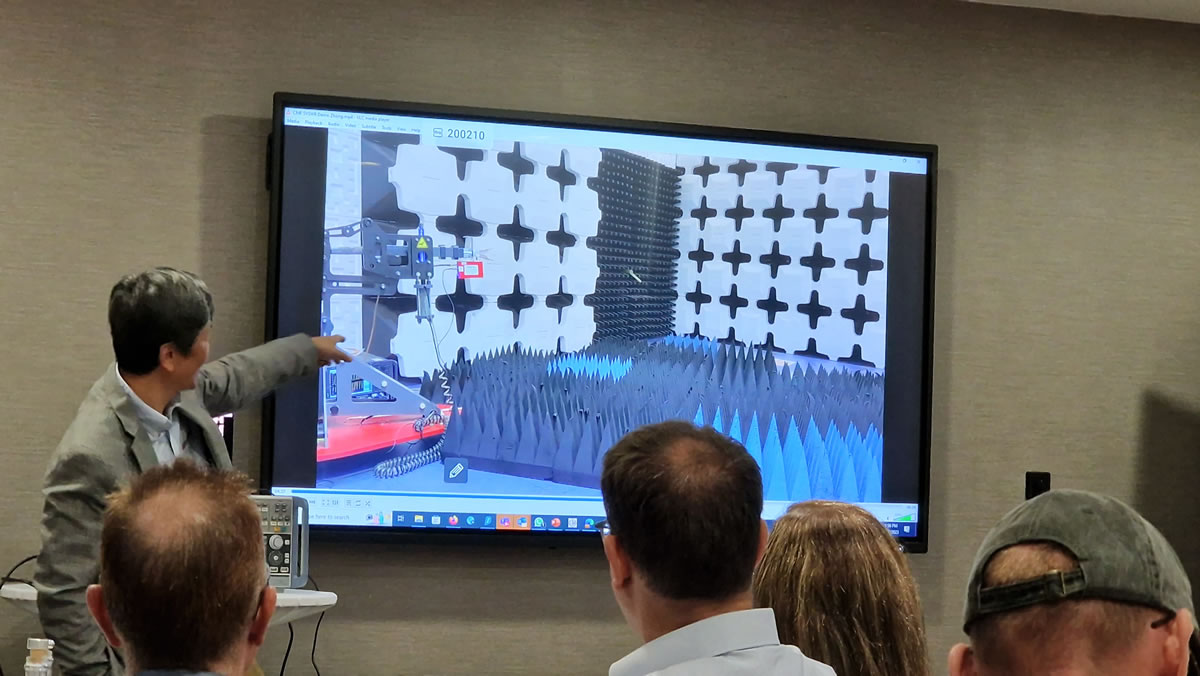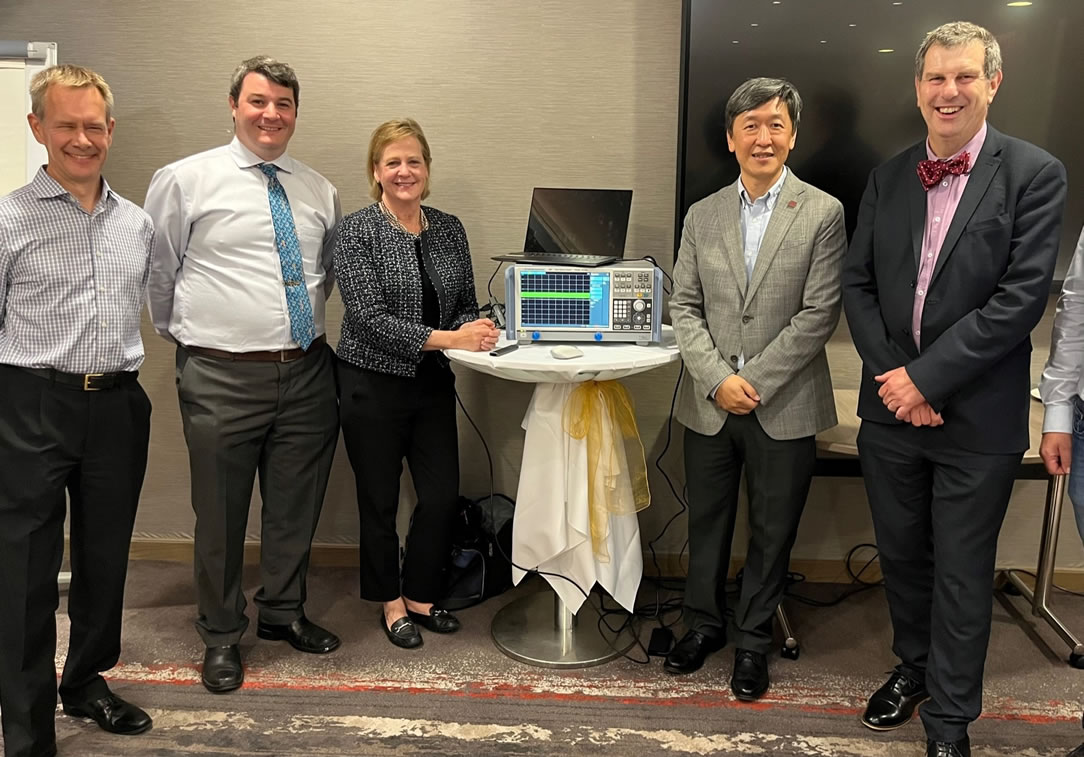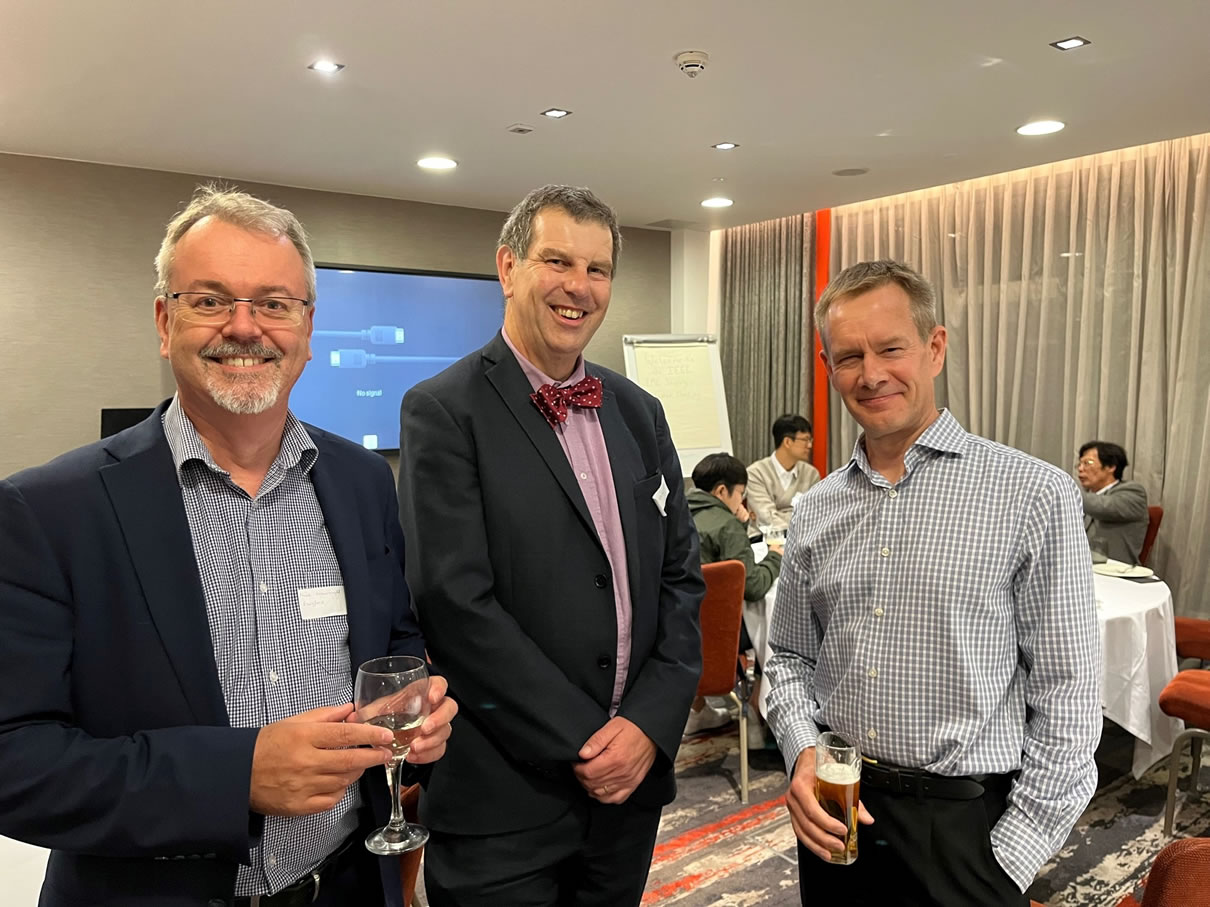Event Report | EMC Chapter Technical Meeting – Novel EMC Measurement Test Techniques
The latest IEEE UK and Ireland Chapter meeting was held in Chiswick, west London on 27th September entitled Novel EMC Measurement Test Techniques; a practical, hands-on event consisting of three presentations addressing advances in EMC test site validation.
The first presentation was CISPR A and ANSC C63® Overview on Site Validation Measurements from 18 GHz to 40 GHz by Nicholas Abbondante, Global Chief Engineer, EMC, Intertek, Boxborough, MA.
Testing to FCC requirements at frequencies above 18 GHz has been occurring for many years, extending up to 231 GHz; however, there has never been a test site validation method developed for this frequency range. The assumption has been that sites qualified below 18 GHz were acceptable above that frequency, but this conclusion was not based on data. With the advent of transmitters operating at 25 and 38 GHz and above, site validation has become more critical, and testing in the far-field and within the beamwidth of the measurement antenna becomes more difficult.
The goal of the C63.25.3 working group is to develop site validation methods from 18 GHz to 40 GHz to enhance the validity and repeatability of future measurements and to provide validations and correlations for alternative test sites such as compact antenna test ranges (CATRs) and reverberation chambers to help resolve the far-field testing issues.
This was followed by a presentation on Recent Advances in EMC Test Site Evaluation Using Advanced Antenna Measurement Techniques which was given by Zhong Chen, Chief Engineer, ETS-Lindgren, Cedar Park, TX
Calibrating antennas and validating test sites are interdependent processes, as they both mandate accurate antenna measurements in their testing environment. Site VSWR, as specified in CISPR 16-1-4 or C63.25, is used as the figure of merit to qualify test site performance from 1 GHz to 18 GHz.
In the CISPR method, the standing wave is measured by sampling scalar fields along several linear paths. However, in an effort to simplify the measurement, test data is severely under sampled. Time Domain SVSWR, as specified in C63.25.1 (1-18 GHz), was developed to address the under-sampling issues.
For above 18 GHz tests, new challenges emerge, such as the need to test more locations in the chamber Quiet Zone (QZ) and to measure the receive antenna beam coverage. Cylindrical Mode Filtered SVSWR developed as a result, which is now under active consideration in the C63.25.3 (18-40 GHz) and CISPR 16 standards.
The presentation gave a deeper understanding of the technical background as to how advanced antenna measurement techniques are used to help to solve the different technical challenges.
The final presentation of the workshop was a demonstration of the Cylindrical Mode Filtered SVSWR method.
The Cylindrical Mode Filtered SVSWR (CMF SVSWR) is measured by placing the transmit antenna (typically a low gain omni-directional antenna) at the edge of the turntable, and performing a single cut vector pattern measurement. The vector S21 as a function of turntable angle at each frequency is transformed to the spectrum domain, where a filter can be applied to mathematically remove the chamber effects. The SVSWR is derived by comparing the original pattern in the chamber to the “clean” filtered pattern.
The CMF SVSWR provides a more comprehensive evaluation of EMC chamber quiet zone, and can be readily measured without any special positioning fixtures. The demonstration showed the measurement process including the post processing which can be performed in real time.
This new measurement technique is under consideration for the new draft standard ANSI C63.25.3 under development by the ANSC C63® committee for EMC test sites from 18 GHz to 40 GHz.
The evening was introduced by Prof Alastair Duffy, Chair IEEE UK and Ireland EMC chapter and attended by chapter members as well as well as delegates attending the CISPR A meetings being held at the British Standards Institute nearby.


